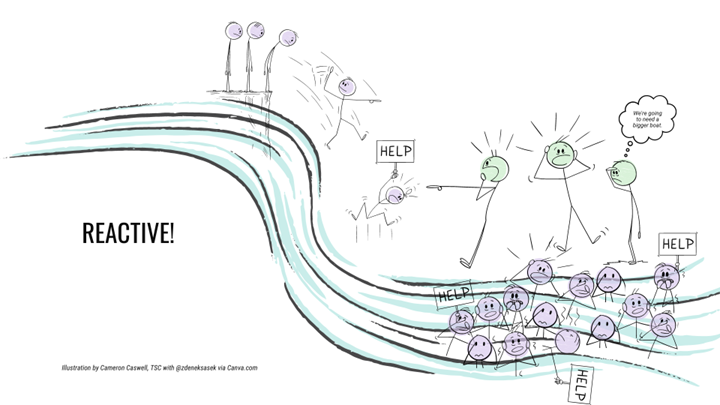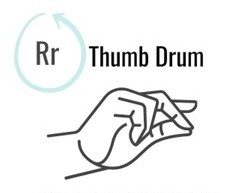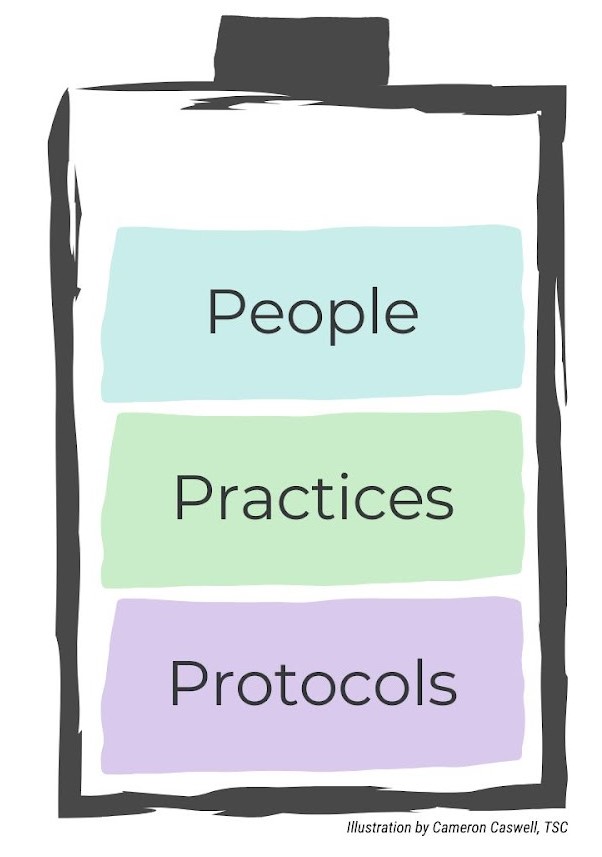In 2021, the American Academy of Pediatrics declared child and adolescent mental health a national emergency. And we’re still there. After persevering through the hardest school years in memory, the NEA America’s educators are exhausted and increasingly burned out (Maiers, 2022). This prevents our depleted educators from giving their students the support needed to thrive both academically and developmentally. Though 96% of U.S. public schools are providing mental health services to students across the country, 88% report that their services are ineffective in resolving the tough issues facing our youth (Department of Education, 2022).
In an attempt to improve the state of mental health, we continue to add more to everyone’s list of “to dos” such as more mental health staff, more SEL, more programming, etc. but this methodology simply is not working. Teachers are burned out, parents are stressed out, and students are checked out. The goal must be preventative so we can stop working from a reactive state of triage.

The current state of mental health in our schools is represented here as a “reactive state of triage”. We can either spend more of our time, energy and funding on traditional strategies that are not working, or we can do something different.
Creating a safe, inclusive environment is a crucial first step that will lead to student success and increased wellness, and the power ultimately lies in the hands of adults. If adults are struggling though, how can they show up energized for kids? They can’t. Or they won’t. That is why we start with them.
When Teachers Are Equipped Well, They Function Better
Since it is difficult to function well when feeling overwhelmed with growing work demands and challenging student behavior, it is best to show educators how to infuse mental health into their daily practice. Imagine having the ability to sneak in wellness activities into the day to re-energize which benefit not only students, but our own state of mind. This is not prescribed or scheduled, rather it occurs when teachers notice that a change of energy or atmosphere will make an improvement in engagement, motivation, mood, or interaction. Having simple tools and skills to do this empowers educators and builds their confidence in creating a safe learning environment, and when we address their needs, we let them know they are valued and supported. Setting up a secure environment for themselves positively impacts kids, and showing them how to attune to their own needs throughout their day aids them in making a shift in their own mood, attitude, and behavior.

A strategy used in the Thriving School Community program is the “Thumb Drum”. It’s a therapeutic tool that is typically used to distract the brain and soothing the body and mind so people can access the decision-making part of their brain. Using a simple approach like this can easily be incorporated in a classroom setting when stress levels rise so the energy level can calm, benefitting both staff and students.
Less frustration and more connection naturally results, and everyone in the learning environment is humanized. When educators build proficiency in using practical skills and strategies that align with student needs, that is when the magic happens. Competent, calm teachers foster a secure space, and kids will feed off of this. When we teach educators to manage themselves while responding to students more effectively, we have a thriving instructional environment where deep, meaningful learning can take place.
Moving Away From the Blame Game
We’re trying to solve the youth mental health crisis by teaching our students social skills and emotional regulation. However, no matter how many SEL classes, lectures, and programs we deliver, the second we throw students back into an environment with burned out teachers and stressed out parents, they are going to revert back to the same discouraging behavior. Out of frustration in dealing with the same patterns, we resort to blame. When we resort to blame, we get stuck in negativity and are not solving any problems. In fact, we only make them worse.

We resort to blame when constantly working in a state of overwhelm and ultimately get stuck in negativity. This blame pattern does not solve any mental health problems; it only perpetuates them.
Shift Our Thinking About Student Behavior
Since mental health plays a significant role in our children’s ability to learn, grow, and thrive, learning to identify the underlying message of their behavior, rather than reacting to it, is a much better approach to cultivating health and wellness. If we view behavior as a symptom of the problem rather than the problem itself, we can make tremendous breakthroughs in a classroom setting. Instead of jumping out of our seats, posturing, or yelling, we can ask ourselves, “What am I missing?”, or “I wonder what they are trying to tell me.”

Having a simple reminder, like the “I Wonder” bubble, which uses curiosity during challenging interactions can mean the difference between calm and chaos.
It can be the link to whether a situation becomes more explosive or inclusive. When children experience mental health challenges, it is more important to embrace them and validate their issues rather than further isolate them. Listening and observing more reflexively avoids critical labeling of children, so if we get curious rather than callous, kids respond less abrasively. Misbehaviors will decrease and engagement will increase. In this space, students feel more empowered to take academic risks, which is essential to student growth and learning, so gifting them with connection, compassion and curiosity will lead to a successful outcome for everyone.

Shifting Responsibility From a Few to Many
Imagine everyone in the building equipped with the tools and skills to manage themselves, respond well to others, and work better together. Ultimately, we build a more peaceful, thriving school culture this way and shifts the responsibility of student mental health from just a few professionals in the building to everyone. We already have passionate educators positioned as “front line workers” who consistently build relationships with kids and can become great informants. Powering up what we already have in place: people, practices, and protocols, can make significant and immediate improvements. Power up your people, practices, and protocols that are already working in your building so we don’t have to undertake any new major overhauls.
Mental health staff already have high caseloads, so when other adults in the building, namely teachers, learn to mitigate common student challenges themselves and stabilize students long enough to stay in their classrooms, school counselors and social workers have more time to dedicate to children with complex issues. Maladaptive behaviors will lessen since there are more opportunities to be heard and expressive in a space of acceptance and kindness, so relief will be given to the entire system as soon as we do this.
References
- American Academy of Pediatrics (AAP). (2021). AAP-AACAP-CHA Declaration of a National Emergency in Child and Adolescent Mental Health. AAP-AACAP-CHA. https://www.aap.org/en/advocacy/child-and-adolescent-healthy-mental-development/aap-aacap-cha-declaration-of-a-national-emergency-in-child-and-adolescent-mental-health
- Department of Education. National Center for Education Statistics (NCES). (2022, May 31). Roughly Half of Public Schools Report That They Can Effectively Provide Mental Health Services to All Students in Need. Institute of Education Sciences (IES). https://nces.ed.gov/whatsnew/press_releases/05_31_2022_2.asp
- Maiers, Stacy. (2022, October 4). NEA issues report providing solutions to mitigate the educator shortage crisis. https://www.nea.org/about-nea/media-center/press-releases/nea-issues-report-providing-solutions-mitigate-educator-shortage-crisis

